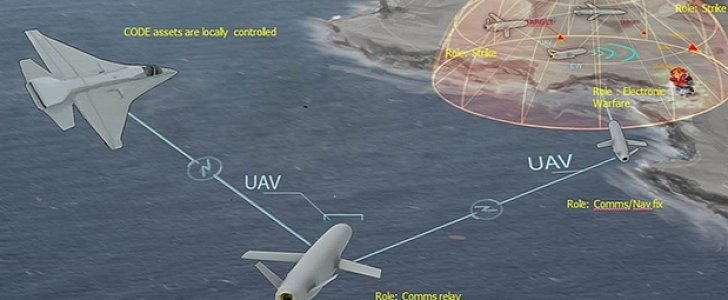With the eyes of the world fixed on the race to create the world’s first truly autonomous car, few notice the advancements made in the field of autonomous weapons by military research agencies and companies.
For the private sector, there is a thing called the Lethal Autonomous Weapons Pledge, an initiative signed among others by Google's DeepMind project and Elon Musk, and meant to ensure that private companies researching autonomous systems do not weaponize them on behalf of governments.
The initiative is in no way supported by governments, and this week DARPA showed just what an agency unhindered by such restraints in the field of autonomous weapons is capable of.
At the Yuma Proving Ground in Arizona, DARPA conducted a series of tests of UAVs equipped with the Collaborative Operations in Denied Environment (CODE) software. CODE is meant to allow weapons to share information, plan and allocate mission objectives, make tactical decisions and react to the changing battlefield environment.
According to DARPA, the UAVs were initially operated under supervision from the mission commander, but the scenario called for the communications to be degraded or denied altogether. When that happened, the UAVs continued on their mission without human intervention.
“The test series expanded on previously demonstrated approaches to low bandwidth collaborative sensing and on-board planning,” said in a statement Scott Wierzbanowski, DARPA program manager for CODE.
“It demonstrated the ability to operate in more challenging scenarios, where both communications and GPS navigation were denied for extended periods.”
DARPA tested six live and 24 virtual UAVs, all of which were asked to navigate, search, locate, and engage both preset and pop-up targets in simulated Integrated Air Defense System (IADS) and in communications- and GPS-denied scenarios.
The tests for the CODE system is scheduled to end in spring 2019, after which the software will be integrated with the Naval Air Systems Command.
The initiative is in no way supported by governments, and this week DARPA showed just what an agency unhindered by such restraints in the field of autonomous weapons is capable of.
At the Yuma Proving Ground in Arizona, DARPA conducted a series of tests of UAVs equipped with the Collaborative Operations in Denied Environment (CODE) software. CODE is meant to allow weapons to share information, plan and allocate mission objectives, make tactical decisions and react to the changing battlefield environment.
According to DARPA, the UAVs were initially operated under supervision from the mission commander, but the scenario called for the communications to be degraded or denied altogether. When that happened, the UAVs continued on their mission without human intervention.
“The test series expanded on previously demonstrated approaches to low bandwidth collaborative sensing and on-board planning,” said in a statement Scott Wierzbanowski, DARPA program manager for CODE.
“It demonstrated the ability to operate in more challenging scenarios, where both communications and GPS navigation were denied for extended periods.”
DARPA tested six live and 24 virtual UAVs, all of which were asked to navigate, search, locate, and engage both preset and pop-up targets in simulated Integrated Air Defense System (IADS) and in communications- and GPS-denied scenarios.
The tests for the CODE system is scheduled to end in spring 2019, after which the software will be integrated with the Naval Air Systems Command.

